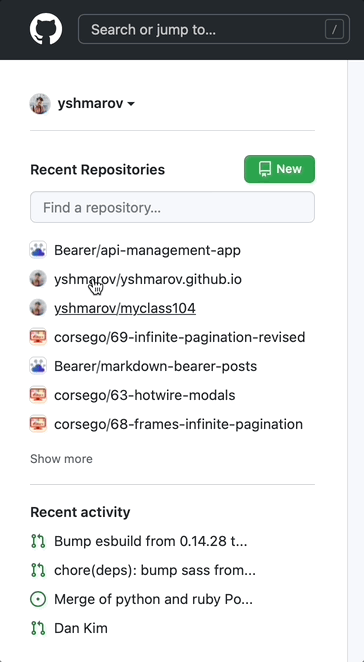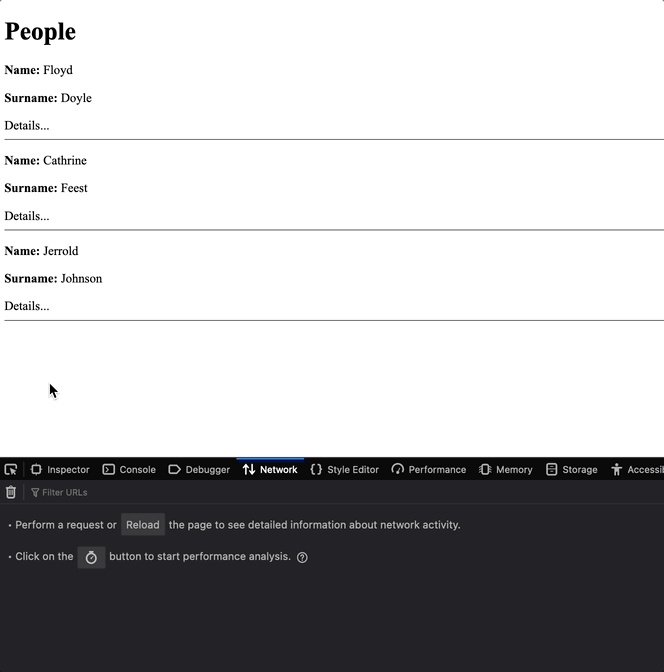 Hotwire Turbo Frames: Hovercards
Hotwire Turbo Frames: Hovercards
Let’s make github-styled hovercards/tooltips that load content only when you hover on an element, using lazy-loaded turbo frames and a bit of CSS:

1. Initial setup #
# config/seeds.rb
3.times do
Person.create(name: Faker::Name.first_name,
surname: Faker::Name.last_name,
address: Faker::Address.full_address,
phone: Faker::PhoneNumber.cell_phone)
end
bundle add faker
rails g scaffold person name surname address phone
rails db:migrate
rails db:seed
2. CSS: display hidden area on hover #
/* app/assets/stylesheets/application.css */
.hoverWrapper #hoverContent {
display: none;
position: absolute;
background-color: black;
color: white;
padding: 10px;
border-radius: 4px
}
.hoverWrapper:hover #hoverContent {
display: block;
}
hoverContent is hidden by default.
hoverContent is visible when hovering hoverWrapper.
<span class="hoverWrapper">
Hover me...
<div id="hoverContent">
Hidden content
</div>
</span>
How it works:

3. Lazy-Loaded Turbo Streams #
Add a route for the hovercard
# config/routes.rb
root to: redirect("/people")
resources :people do
member do
get :hovercard
end
end
Add a controller action
class PeopleController < ApplicationController
def hovercard
@person = Person.find(params[:id])
end
end
- Add a template that will contain some info
- Wrap the template into a turbo_frame with an ID that is unique to this
@person -
target: "_top"- for links inside theturbo_frameto work
# app/views/people/hovercard.html.erb
<%= turbo_frame_tag dom_id(@person, :hovercard), target: "_top" do %>
<%= link_to "Show this person", @person %>
<%= @person.id %>
<%= @person.address %>
<%= @person.phone %>
<% end %>
- Finally, add a turbo_frame_tag that would lead to
hovercard_person_pathin the hidden area of the HTML. - A
turbo_streamwithloading: :lazyis loaded only when it becomes visible on the screen. -
role="button",aria-describedby="id",role="tooltip"are just some fancy HTML tags that help the browser read your HTML in a better way. You can do without them.
# app/views/people/_person.html.erb
<div class="hoverWrapper">
<span role="button" aria-describedby="<%= dom_id(person, :hovercard) %>">
Details...
</span>
<div id="hoverContent">
<%= turbo_frame_tag dom_id(person, :hovercard), target: "_top", role: "tooltip", src: hovercard_person_path(person), loading: :lazy do %>
Loading...
<% end %>
</div>
</div>
Now, when you hover on Details..., the <div id="hoverContent"> will become visible and will load the template app/views/people/hovercard.html.erb.
Final result:

That’s it!
Inspired by Steve Polio’s post
Did you like this article? Did it save you some time?
